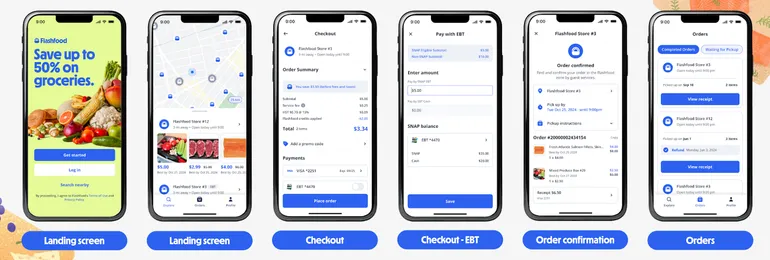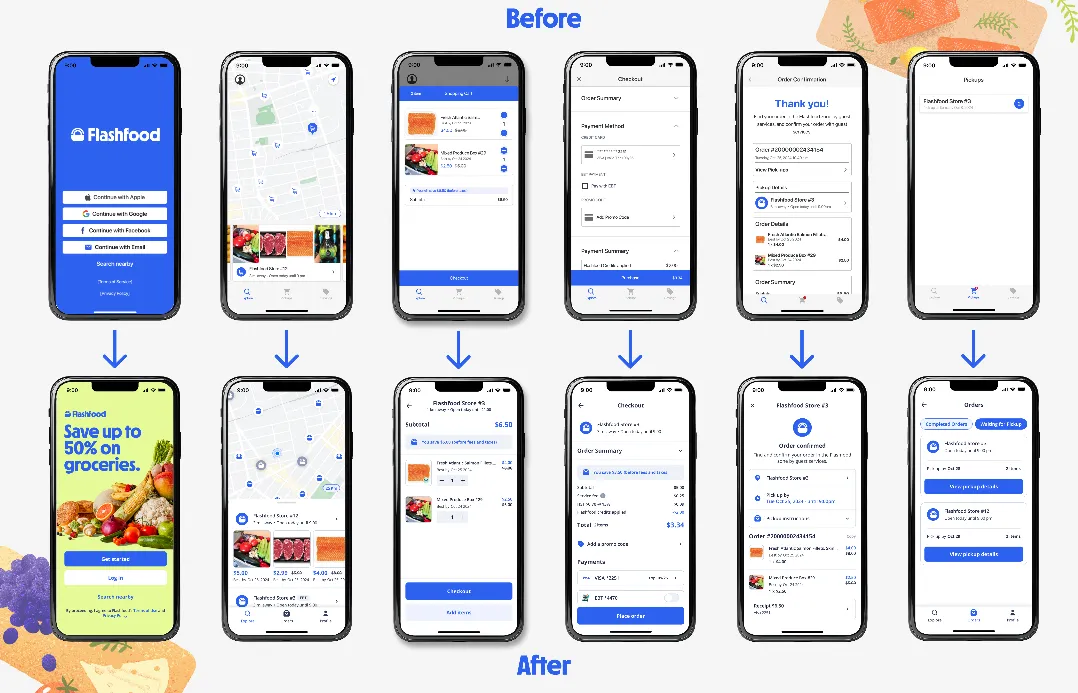Flashfood updates app to streamline shopping experience

Dive Brief:
- Flashfood has released a newly revamped app that features new graphics and tools to make shopping easier for customers.
- The upgrade, released Tuesday, focuses primarily on the front-end shopper experience and offers a more fluid browsing system, easier searchability and smoother pickup communication, Flashfood’s Chief Operating Officer Jordan Schenck said in an interview.
- The release of the upgraded tool continues an “energetic shift for the business,” Scheneck said as the company plans to bolster its role as a tech partner in the next year.
Dive Insight:
Flashfood has been undergoing a brand identity shift this year and has ushered in a slew of new c-suite executives to help redefine it as more than just a food waste prevention partner.
Schenck, whose onboarding was announced along with Nicolas Bertram’s appointment to CEO in January, has been leading a number of these rebranding efforts, including Flashfood’s updated logo and overall visual identity.
The updated app includes a refreshed onboarding process for new shoppers, the ability to browse multiple stores at once, and simplified SNAP and EBT checkout, according to a press release.
Schenck noted that the app’s browsing capability received the most attention in the revamp process. Shoppers can use Flashfood 3.0’s map feature to find stores and choose items to purchase in a more streamlined way, she said.

Courtesy of Flashfood
While the retailer side of the platform didn’t change much, the updated app offers clearer and more direct messaging to shoppers about when they need to pick up their claimed food to cut back on the number of customers who don’t show up — an ongoing pain point for its grocery partners — Schneck said.
Over the next year, Flashfood plans to continue building out merchandising features in the app, Schenck said. Currently, the company is running beta tests through the app for stores’ bakery and ready-made sections in addition to produce. The company also plans to advance its search capabilities for shoppers and retailers as well as revitalize its tagging and catalog structure so it more accurately reflects product availability.
Related
Exclusive | Dave Portnoy is quietly shopping a book
Barstool Sports founder Dave Portnoy is shopping a book, Page Six has exclusively learned. Portnoy’s agency UTA is repping the tome, sources te
We Track Sales For A Living. Here Are The 30…
As shopping experts, we shop slowly and carefully to discern if a sale offers the most bang for our buck. From everyday essentials to larger splurges, knowing w
Can you afford to be patriotic when grocery shopping?
CBCPenguins bask on the shore of King George Island near Brazil's Comandante Ferraz research station in Antarctica.Antarctica is like no place on Earth. The "W
Our Readers Top Loved Products Last Month Were All Sleep…
1TOP-TESTED COTTON SHEETSCalifornia Design Den Cotton SheetsNow 23% OffCredit: California Design DenWhy we love it: If you have been reading our What's In My Ca











